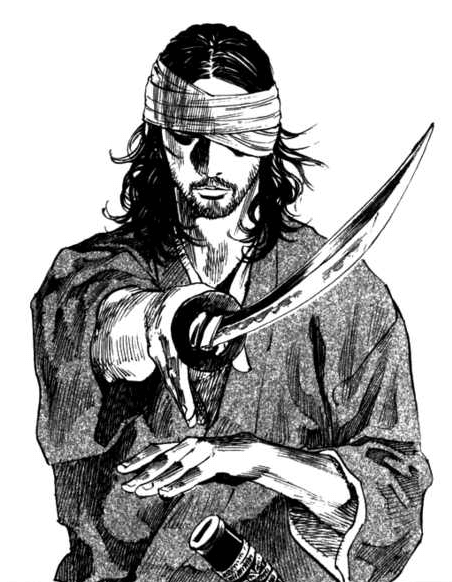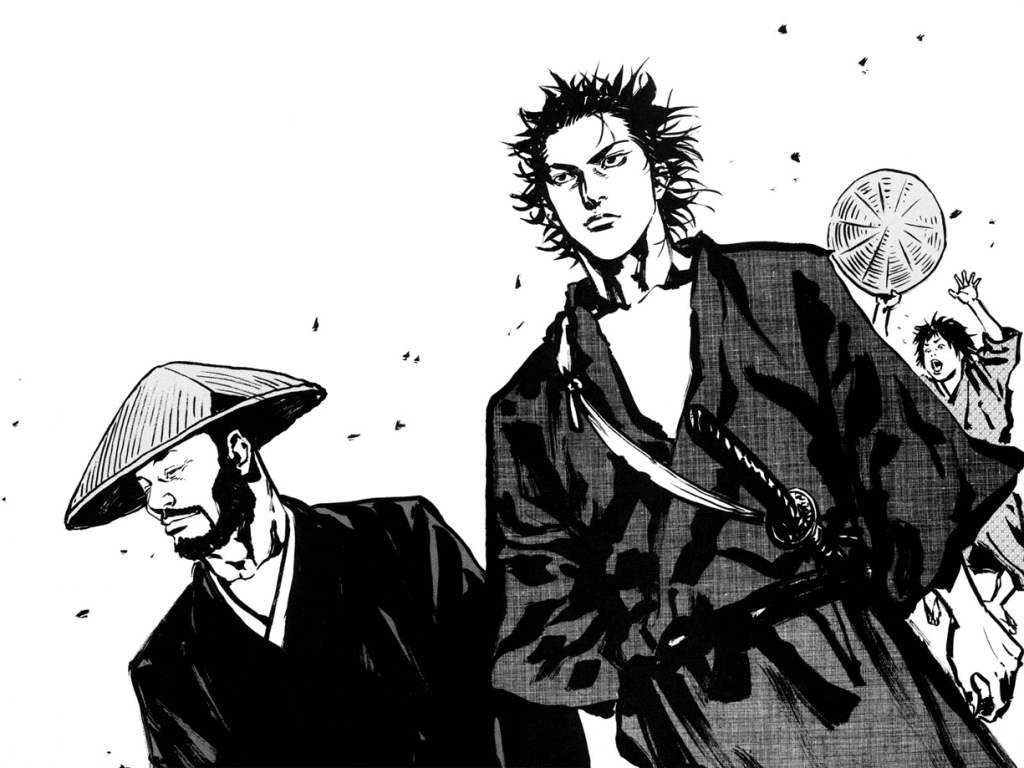Vagabond, by Takehiko Inoue (creator of Slam Dunk), is a manga series best described as epic.
Dive into Endless Stories with Webnovel
From exclusive novels, fanfics, R18 stories to popular comics like Omniscient Reader's Viewpoint, Only I level up (Solo Leveling), and Tales of Demons and Gods, Webnovel is your gateway to a universe of captivating stories.
Chronicling the tale of legendary Japanese sword saint, Miyamoto Musashi, Vagabond is a visually stunning interpretation of 16th-century Japan and the interplay of iconic samurai of the era, perfectly capturing moments of visceral violence, serene scenery, and deep introspection.
Buy Vagabond Manga on Amazon | RightStufAnime
Vagabond Manga Review and Discussion

Synopsis Of Vagabond
Feared for his bloodthirsty and feral nature, Shinmen Takezo leaves his hometown along with his friend Honiden Matahachi, enlisting in Toyotomi Hideyoshi’s army in the Battle of Sekigahara in hopes of achieving greatness. As history would have it though, they were on the losing side of that particular war, and barely escape the battle and its aftermath with their lives.
Related: 25 Best Manhwas To Read For Female Readers
The two companions swear to become invincible warriors henceforth, but destiny takes them to different places, and Takezo finds himself persecuted by the people of his own village. Eventually captured by the monk Takuan, Takezo is forced to reevaluate his purpose in life and reinvents himself as Miyamoto Musashi.
Clinging to his desire to become a peerless swordsman, Musashi travels in search of opponents, gradually earning repute and notoriety. But even as he seemingly comes closer to his dream, Musashi is constantly forced to contemplate the meaning of strength and what truly matters to him.

Related: 50 Best System Manhwa/Manhua/Manga Like Solo Leveling
Is Vagabond Worth Reading?
The true beauty of Vagabond, beyond its gorgeous artwork and battles, is its exploration of philosophy. Be it Musashi’s evolving personal philosophy as he achieves enlightenment or the motivations and aesthetics of other iconic characters, they are all solidly fleshed out and wholly endearing. Perhaps the best example is Musashi’s fated rival, the deaf prodigy, Sasaki Kojiro.

Unable to speak due to his disability, the only way he can truly communicate is through life-and-death duels. However, in spite of his pragmatism and brutality in combat, Kojiro carries an innocence with him: he genuinely doesn’t understand the implications of taking a life. He engages in duels and smiles childishly through them because he enjoys fencing, and has never feared a sword.
Related: What You Should Know About Blue Lock Manga
Such characters are plentiful in Vagabond, including but not limited to hardened veterans like Yagyu Sekishusai and Kojiro’s eventual mentor, Itou Ittousai. Other than being genuine historical figures, they bring their own perspectives and ideologies to the series, and while none of them are ever portrayed as “correct”, they flesh out their individual characters and thematic relevance.

Characters aside, the most striking aspect is clearly the art. I don’t care how many times I need to say it: the artwork is stunning, although in my opinion, the character designs resemble those of Slam Dunk quite a bit. Don’t misunderstand, the clothing and character art is solid, but I definitely think the battle and background art (like the one above) are superior.
When it comes down to it though, I only have two criticisms geared towards this otherwise perfect manga. Firstly, it is currently on hiatus, and the way things are looking, the Vagabond manga will never be finished. In 2015, chapter 327 became the last published chapter of the manga. Vagabond has been compiled into 37 volumes as of 2021, and with Inoue’s hiatus almost reaching 6 years by now, I’ve personally given up on seeing the conclusion of the manga, even though it bothers me to do so.
We can’t pinpoint the reason behind why Vagabond up and stopped, largely because Inoue has kept it vague. Although he went on hiatus back in 2010 due to health concerns, after his return to the manga, he cited stress and creative issues as his reasons for inconsistency, and while this is off-putting for those seeking a completed manga, the artist’s discretion must also be respected, especially seeing the quality of work that he’s been putting out since Vagabond started back in 1998.
Related: 24 Best Harem Manhwa Recommendations
Secondly, I felt the first few dozen chapters of the manga were somewhat difficult to go through, not because they were bad in terms of art or plot, but because it was difficult to discern the purpose and direction of the narrative. Although it makes sense later, the initial chapters were painfully existential, for both Musashi and the audience.
When all is said and done though, I have to recommend it to anyone reading this. Vagabond is a freakin’ good read, and almost doesn’t feel like manga, as its permeating tranquillity and contemplative moments can really challenge the way you think about certain aspects of life.
Related: 13 Best Martial Arts Manhwa In 2023 (That A Webtoon Lover Has To Read)

The impact of Musashi
Part of what makes Vagabond so engaging is the focus on Miyamoto Musashi himself. Even beyond media adaptations, Japan’s sword saint is a thoroughly enigmatic figure, and I find it important to consider why.
Vagabond itself is based on the semi-fictional work “Musashi” by Eiji Yoshikawa, which was serialised in the 1930s. It has gone on to become one of the most mainstream tellings of the iconic figure’s story, with even the famous Samurai movie trilogy in the 1950s being based specifically on Yoshikawa’s novel.
Related: Is Kengan Ashura Worth Reading?
This may be in part because of how it dramatises Musashi’s story, and also fills in the gaps in history. Due to us not knowing all the intricacies or details of the real Miyamoto Musashi’s historical story beyond some recorded highlights, we are left to fill in the blanks ourselves, which is exactly what Yoshikawa’s “Musashi” facilitates.
Arguably the most enduring aspect of Musashi’s legacy is the book he authored, The Book of Five Rings, a text on swordsmanship and battle in general. More than just a combat manual, it offers many valuable lessons and morals on life and conflict in general. What it also exposes us to, is the real life Musashi’s unconventional and straightforward approach to life and war.
Miyamoto Musashi is generally portrayed as wild and arrogant in media, because this is the impression he gives off in The Book of Five Rings. He takes a very pragmatic approach when describing combat: the only thing that matters is victory, so fancy techniques and displays of “honour” are obsolete to the purpose.
Related: Top 17 NEW Manhwa/Manhua With Overpowered Main Character
Folklore also speaks of his deviations from tradition, and his successful application of seemingly “dishonourable” tactics. A famous example is in his legendary duel with Sasaki Kojiro (which the Vagabond manga still needs to adapt!!!), where he showed up several hours late for their appointed duel. While some accounts state the carefree Musashi overslept, others agree that he did this on purpose to make his opponent impatient and agitated.
The kind of unconventional behavior for which he has become noted would have been aberrant in Japanese society at the time, which was known for its norms and sense of honor. Musashi’s exceptional personal and spiritual success in spite of being such a strange exception to so many rules are most likely what made him an enigmatic, and widely revered, Japanese figure, whose legacy endures to this day.
Buy Vagabond Manga on Amazon | RightStufAnime
